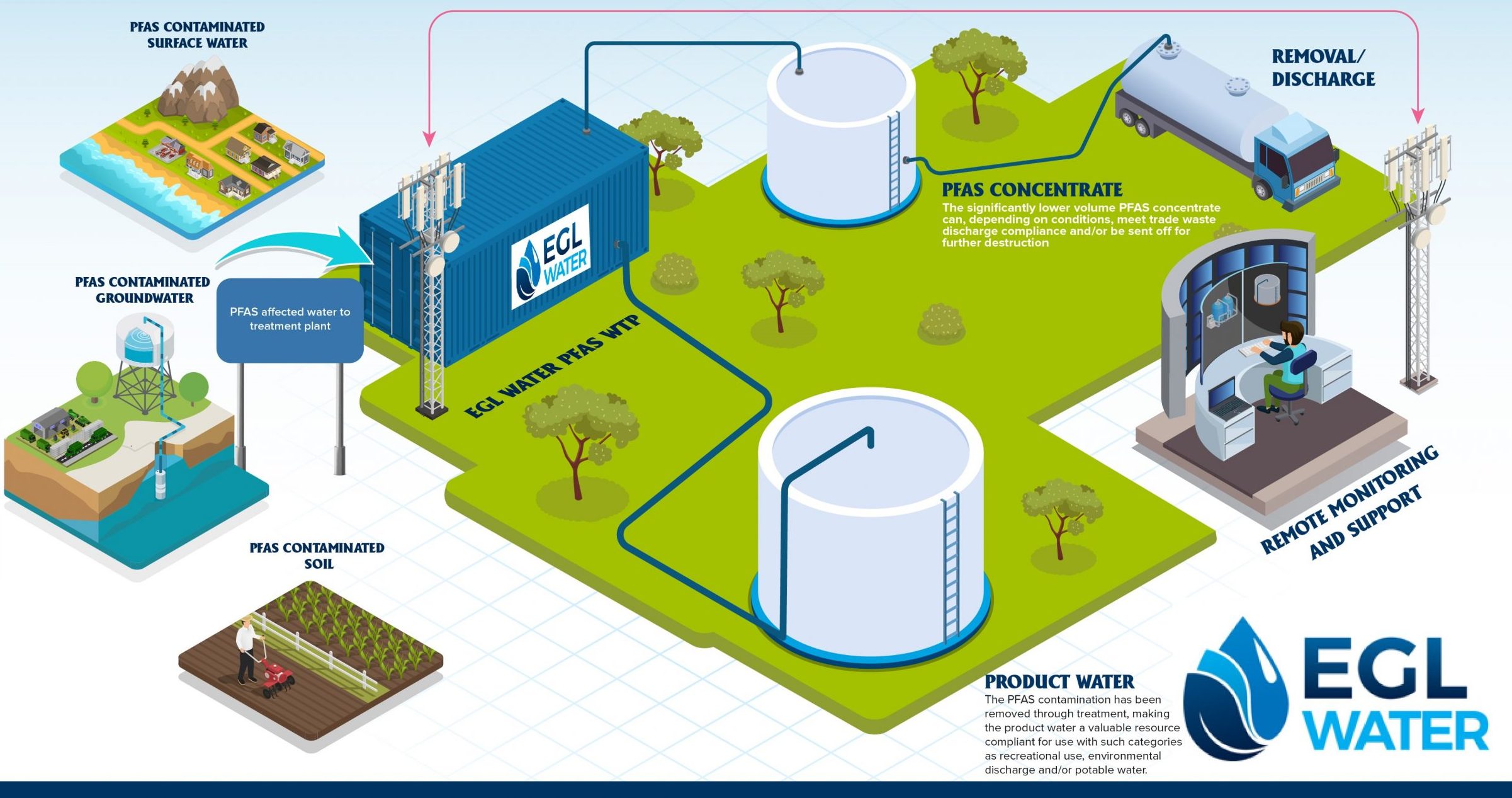M270 PFAS Treatment for Municipal Water Systems
Wiki Article
Innovative PFAS Therapy Solutions for Safer Water
The boosting occurrence of PFAS contamination in water supplies demands an important exam of cutting-edge therapy solutions. Advanced filtering innovations and novel chemical treatments present appealing avenues for decreasing these relentless pollutants. Furthermore, arising bioremediation techniques use an even more lasting method to taking on PFAS obstacles. As regulative structures proceed to adapt, comprehending the effectiveness and scalability of these solutions becomes extremely important. What effects do these developments hold for public health and ecological remediation, and how can stakeholders properly implement them in varied contexts?Introduction of PFAS Contamination
PFAS contamination has actually arised as a considerable ecological and public wellness concern. Per- and polyfluoroalkyl substances (PFAS) are a group of synthetic chemicals known for their perseverance in the atmosphere and body, leading them to be typically described as "permanently chemicals." These substances have been commonly made use of in various sectors, including firefighting foams, water-repellent textiles, and food product packaging, largely due to their water- and grease-resistant properties.The extensive usage of PFAS has resulted in their detection in soil, water supplies, and even in the blood of people and animals. Research studies have connected PFAS exposure to numerous health concerns, including developing impacts in babies, body immune system disorder, and numerous types of cancer cells. In addition, the environmental perseverance of these substances complicates their degradation and elimination, elevating worries regarding lasting eco-friendly effects.
Governing bodies are increasingly carrying out stringent guidelines to keep an eye on and reduce PFAS degrees in alcohol consumption water and various other ecological tools. As awareness of PFAS contamination expands, it has actually ended up being important for neighborhoods and sectors to seek efficient therapy remedies to minimize exposure and safeguard public wellness.
Advanced Filtration Technologies
As the necessity to deal with PFAS contamination magnifies, advanced filtration technologies have become a critical element in the removal efforts targeted at eliminating these persistent chemicals from water resources. These technologies leverage innovative devices to effectively target and record PFAS substances, which are infamously immune to conventional treatment methods.One of one of the most promising techniques is using granular turned on carbon (GAC), which adsorbs PFAS molecules because of its high area and porous structure. This approach has been commonly executed in both metropolitan and commercial setups, showing significant reductions in PFAS concentrations. In addition, ion exchange materials have actually obtained traction, especially made to precisely bind PFAS ions from water, thus facilitating their removal.
Membrane layer filtration modern technologies, such as reverse osmosis and nanofiltration, additionally reveal effectiveness in PFAS removal by physically dividing impurities from water - pfas management. These systems can accomplish high degrees of pureness, making them ideal for alcohol consumption water applications
Chemical Therapy Advancements
Countless chemical therapy technologies are being explored to successfully attend to PFAS contamination in water products. One encouraging technique involves making use of innovative oxidation processes (AOPs), which make use of powerful oxidants such as ozone, hydrogen peroxide, or chlorine dioxide incorporated with UV light to break down PFAS substances right into much less hazardous materials. This technique has actually shown effectiveness in research laboratory settings, showing possible for scalability in real-world applications.An additional cutting-edge approach is the development of ion-exchange resins specifically designed to target PFAS. These materials can selectively adsorb PFAS compounds from water, enabling their elimination throughout treatment processes. Recent developments have boosted the performance and capability of these materials, making them a beneficial choice for water therapy facilities.
In addition, scientists are exploring using chemical representatives like persulfate and ferrous ions to enhance the deterioration of PFAS in contaminated water. These representatives can induce chain reaction that help with the malfunction of persistent PFAS substances.
Arising Bioremediation Strategies
Current innovations in chemical therapy advancements have led the method for exploring bioremediation strategies as a sensible choice for resolving PFAS contamination. Bioremediation harnesses the all-natural metabolic procedures of microorganisms to weaken or change pollutants, making it an enticing method for dealing with relentless pollutants like PFAS.
Emerging techniques in bioremediation consist of the usage of genetically engineered bacteria that can particularly target and damage down PFAS substances. These microbial strains are being created for their boosted deterioration capacities, boosting the efficiency of the remediation process. Additionally, researchers are checking out the capacity of plant-assisted bioremediation, where certain plant varieties may uptake and withdraw PFAS from contaminated dirt and water.
An additional appealing method is the application of bioaugmentation, which involves presenting advantageous microorganisms into polluted atmospheres to improve the destruction of PFAS. This technique can assist in faster removal timelines and enhance general efficiency.

Regulatory Structures and Requirements
A thorough governing framework is necessary for properly taking care of PFAS contamination and making certain public health and wellness security. The raising acknowledgment of per- and polyfluoroalkyl substances (PFAS) as environmental toxins has actually prompted various federal and state firms to create requirements that regulate their existence in water products. The U.S. Environmental Security Company (EPA) has actually developed wellness advisories and is pursuing setting enforceable limitations for PFAS in drinking water.State-level guidelines differ considerably, with some states adopting stricter standards than those suggested by the EPA. These regulations typically consist of optimum contaminant degrees (MCLs) for specific PFAS compounds, tracking requirements, and reporting commitments for water utilities. Furthermore, emerging frameworks concentrate on the remediation of contaminated websites, highlighting the demand for efficient treatment innovations.

Conclusion
Finally, the advancement and application of ingenious PFAS treatment remedies are crucial for attending to the pervasive issue of water contamination. Advanced purification technologies, chemical therapies, and emerging bioremediation strategies collectively provide a complex strategy to properly minimize and weaken PFAS levels. As regulative frameworks continue to advance, incorporating these technologies will certainly be important to protect public health and wellness and restore the stability of infected water resources, eventually adding to a cleaner and safer setting.Report this wiki page